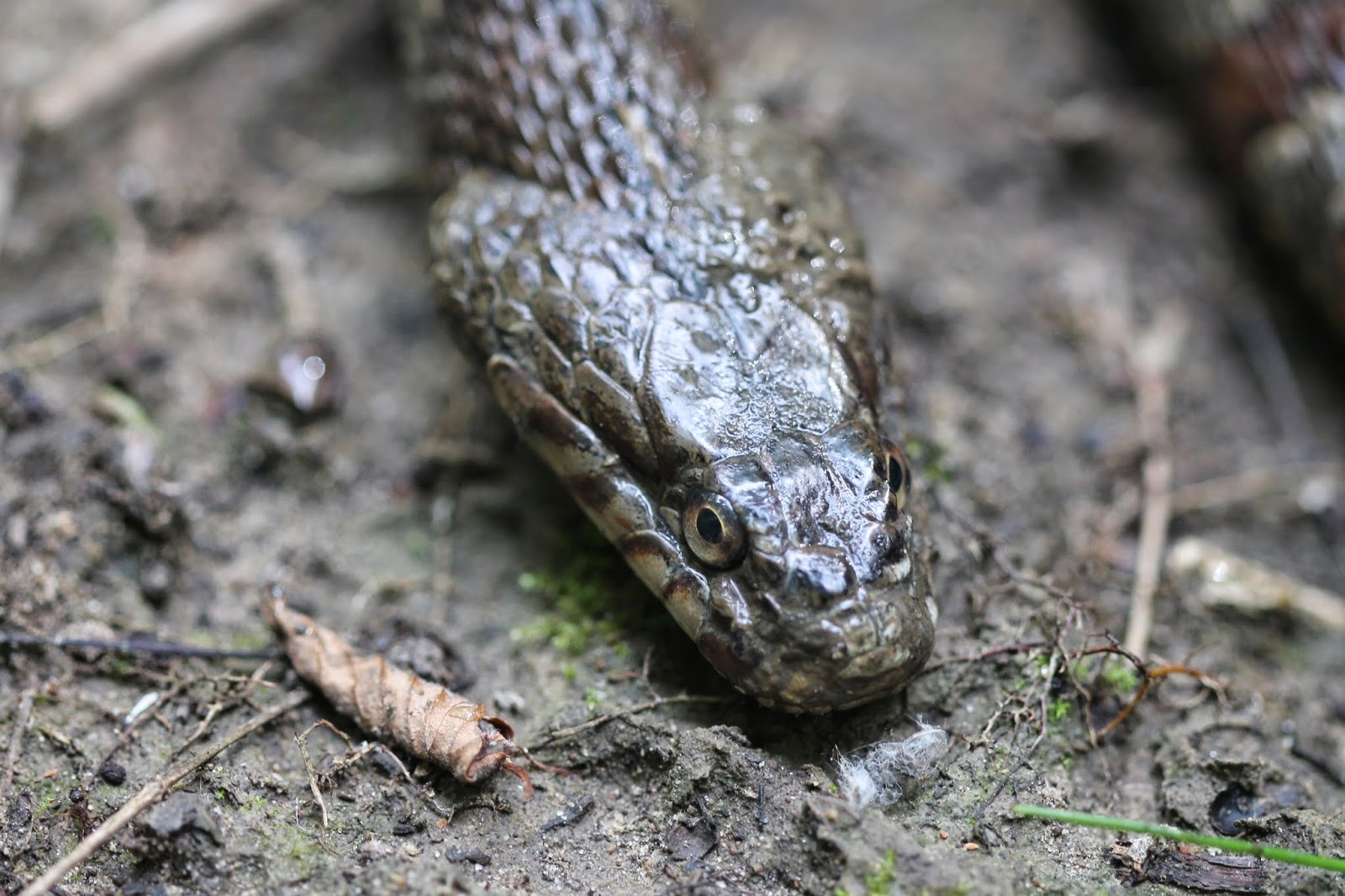The Trestle - code name for the closest natural area to my home, and location of the most local populations of plains garter snakes and brown snakes. I have blogged about the Trestle many times before and my descriptions and photos of the area could easily lend to the discovery of it by readers. I have a love/hate relationship with the Trestle - I love that there is a forest preserve so close by that supports remnant populations of snakes. I hate what it has become, a cesspool for ne'er do wells, creepers, druggies, ritualists, and hobos. Essentially, the area is forest preserve bisected by an abandoned railroad right-of-way and the North Branch of the Chicago River. A trestle is located at the junction of the river and the railroad line and is the namesake of the area. The trestle is kind of like the hub of most of the suspicious activity, although over the years I've witnessed shadiness at every single corner of the preserve. Graffiti and spray paint cans litter the entire area. Long-deserted hobo camps, extensive in nature and in various stages of decomposition, dot the preserve, and black garbage bags full of construction material strewn about are only one of the few signs that this site is often used as a dumping ground. I cannot forget the used needles and prophylactics that remind me that I always need to keep the eyes in the back of my head wide open.
In spite of the careless treatment the preserve has had to endure, there are still signs that prove nature can and will find a way to fight back to regain its rightful position in the hierarchy of existence. Just like a scene out of a post-apocalyptic movie, man-made infrastructure that once represented human progress now crumbles under the quick return and encroachment of weedy brush and invasive species. Old wooden poles that once ran parallel to the tracks toppled under the weight of the vines that covered them. A "secret" abandoned cemetery, located in a dark, leafy enclave of the preserve and protected by an army of dedicated, fearless mosquitoes, resembles a jungle more so than it does a perpetual place of rest. Old vehicles, long ago stolen, burned, and pushed off the railroad embankment, now wallow half-buried in the mud of the bottomland hardwood forest ecosystem.
The most success nature has had, however, is in the way the prairie has emerged from the right-of-way itself. It wasn't long ago when big rumbling freight trains chugged their way through a sterile rocky corridor through the woods. Less than twenty years later, the embankment has been allowed to be taken over by all forms of plant life - some native, some introduced. The substrate of sharp crushed stone, intended to reduce or restrict plant life, has surrendered to an onslaught of greenery. The railway ballast overall has leveled out considerably in the absence of maintenance. It is an example of ecological succession - the evolution of a biological community. Much like how a landscape slowly evolves following a volcanic eruption or how a woodland recovers from a devastating wildfire, this area has slowly been shaped into a new community following disturbance. The best part is, is that right now it is still happening. It hasn't yet reached an equilibrium the way a more intricately-woven ecosystem can and does. So, a visit to the Trestle can produce different results year to year. It is quite fascinating, and is something most wouldn't really notice unless you knew what to watch for.
Honey bee digging for gold
Western salsify (Tragopogon dubius) - native to Eurasia, now naturalized in this region and often considered an invasive species.
Thistle - nature's mean joke.
What's this? A native plant? The yarrow (Achillea millefolium), long known for its herbal/medicinal properties.
Succession following less than twenty years of trainless activity.
A sad commentary on values toward nature.
Midland brownsnake (Storeria dekayi) in its "natural habitat".
A larger brownsnake.
Some people get excited over the newest iPhone, others over who wears what on the red carpet. Me? Finding something so interesting for the first time, such as this shiny metallic beetle that I've yet to positively identify.
The secret abandoned cemetery. In actuality, this was the corner of a currently-existing cemetery that was allowed to grow wild for one reason or another. In the 1990s, the cemetery sold a big chunk of the land to developers, who promptly constructed what else? A large complex of condos and a cul de sac. This development separated the main cemetery from the overgrown corner, and the "lost" cemetery can only be accessed via a hold in a chain-link fence in the woods (but it is NOT easy) or from the "backyards" of the condos. The condo association keeps trying to repair the fence in order to keep people out because they feel others have no right to be there. You know, because living in a condo that was built on a cemetery is completely sane and respectful.
Vegetation in the lost cemetery is comprised mostly of invasive understory trees, buckthorn, shrubs, and lily of the valley.
I'm guessing the lily of the valley was originally planted as an ornamental to help beautify the cemetery. It has gotten out of control over the last ninety years.
Drowning in weeds.
Even military veterans are forgotten here. I'm always surprised at how in this day in age, burials can simply be pushed to the side and forgotten. Oh, for the love of money.








































